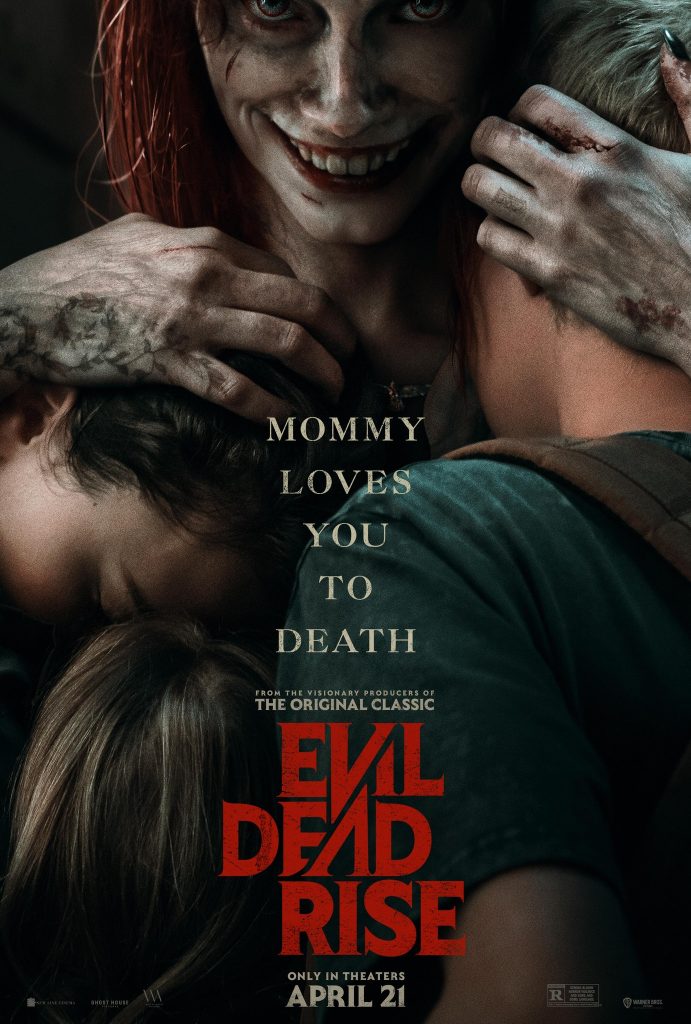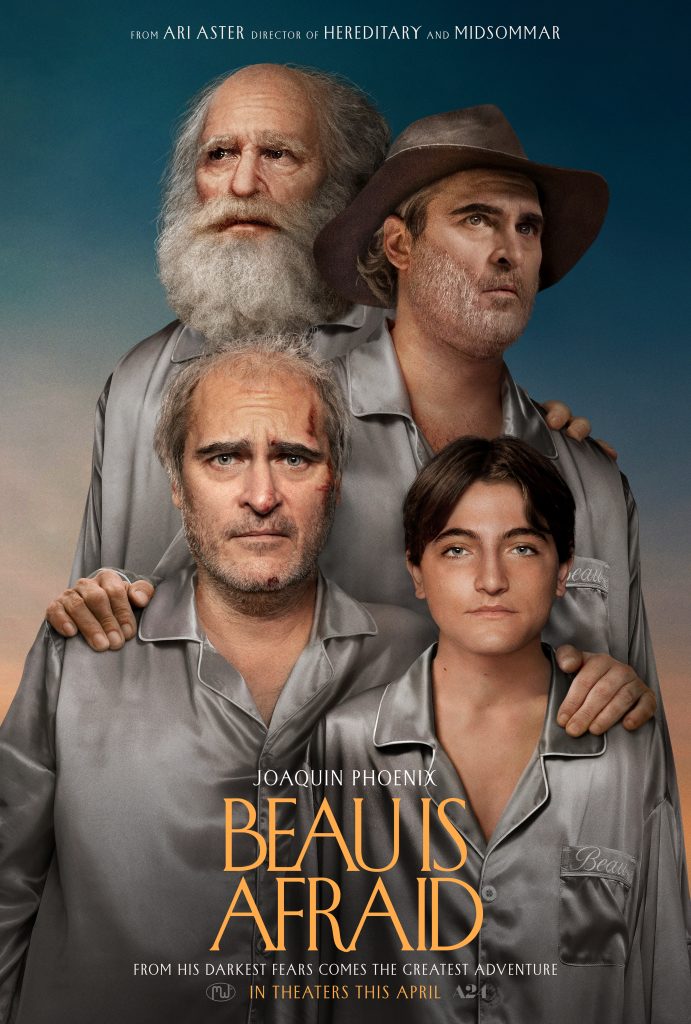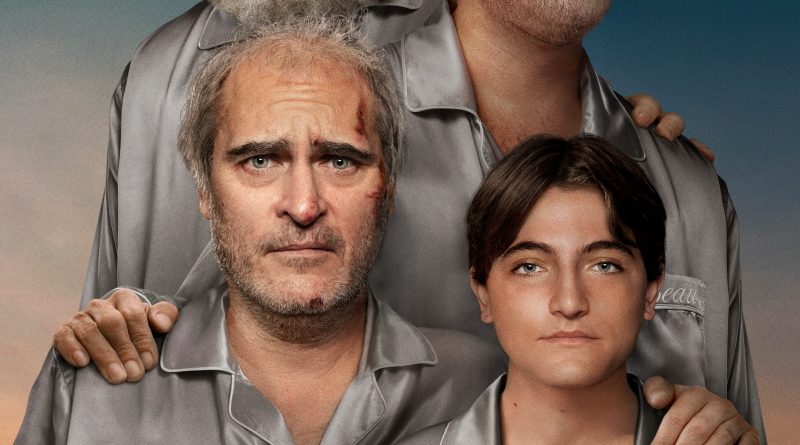Review: ‘Evil Dead Rise’ contrasted with ‘Beau is Afraid’
Mommy issues, dark humor, and grotesque violence galore is where the similarities end with these films.

On April 21, two highly anticipated films categorized as horror were released. One was the follow-up to the fan favorite “Evil Dead” that was released in 2013, “Evil Dead Rise,” and the other was acclaimed director Ari Aster’s much awaited third feature film, “Beau is Afraid.” While IMDb classifies them both as horror, they could not be more different.
“Evil Dead Rise” is a continuation of the classic horror series that began with “The Evil Dead” in 1981, and was turned into even more of a horror cult classic with “Evil Dead 2” in 1987; the second film created the campy, over-the-top, silly horror that the series became known for. “Evil Dead” (2013) brought the films back with somewhat of a soft reboot to a more serious tone, and included extremely graphic and intense violence. “Evil Dead Rise” welcomes back the campiness, though it still has the over-the-top stomach-turning gore that the 2013 film had. It takes place in a derelict apartment building, where everything begins to go wrong when the mother of a group of children becomes possessed by an evil entity and turned into a “deadite.”
It references the 1987 film and other classic horror with cheeky nods and homages— particularly with its fun squirrely and sideways camera moves that are reminiscent of the original series. The opening sequence is brutal to the max and a fun introduction for what is to come. This film does unfortunately run into the problem that many horror movies have, which is that some characters have to be dumb in order for the plot to commence— particularly with the child characters. The effects were fun and the violence felt new and fresh, while still having that classic “Evil Dead” flavor to it. Some moments looked as though they were stop motion, which was exciting to see.
The setting of the original films and the 2013 one was a cabin in the woods— classic horror. This newest addition mixes it up, setting the film in a dilapidated apartment building. I was uncertain if the feel of the film would be cohesive with the others, but it still was, and the new setting offered different and fun scares.
The film seems to find a happy medium between the 2013 seriousness and 1987’s exaggerated humor. Sadly, the characters are overall weak and lackluster, so while there is an abundance of fake blood and scares, the human aspect isn’t as present as it could have been. The end climax was thrilling, tense, and absolutely disgusting— all assisted by very effective sound design. The audience had quite vocal reactions with every nasty hit and kill.

Contrastly, “Beau is Afraid” is not part of any kind of continuation, unless you could consider it being based off of a short film Aster made years prior. “Beau is Afraid” stars Joaquin Phoenix as Beau, a man who just wants to live his life, but suffers from anxiety. To put it simply, the film is a series of increasingly outrageous worst-case scenarios.
Phoenix is phenomenal in this role, and truly carries the film through all of its perplexing plot points and twists. His timid and frightened yet kind demeanor makes him lovable. Phoenix sells every emotion — mostly, of course, fear — and the audience empathizes with him as they embark on this strange and unsettling journey with him.
While the film is classified as horror (horror/comedy specifically), it is in my mind, surrealistic with an ample dose of dark humor, which is accompanied by disturbing and/or graphic moments. It is not easy to grasp onto the plot of “Beau.” Everything takes place in some kind of heightened reality, though it is unclear whether it is “real” or if Beau is imagining things. What is clear is that Beau has a complicated, abusive relationship with his mother. This, along with being a “horror” film that has a touch of humor, is what the two films have in common: a villainous mother.
The visuals are beautiful and the acting is superb, but it would have been nice to have some more grounded moments to the film. Everything is so outrageous and bizarre that it becomes hard to connect to any of it. By the end, I was hoping for some clarity, but I did not receive it. Just like with “Evil Dead Rise,” the film begins with a bang, but “Beau” begins to unravel after the first act and the final act and ending is baffling at best.
These two films are interesting to compare; while it’s not fair to judge which is better as they have drastically different intents and moods, they do represent two popular genres: conventional and unconventional horror.
“Evil Dead Rise” is horrific in that throwing-guts-in-your-face kind of way, and “Beau is Afraid” is far more uncanny and existential. As previously stated, “Beau” is not traditionally scary. It actually made the audience laugh through much of the beginning and throughout the film. “Evil Dead” also has humor and the audience was equally vocal, but it made them jump just as often as it made them laugh.
“Beau” tugs at the subconscious; the marketing describes it as “From his [Ari Aster’s] darkest fears comes the greatest adventure.” It feels like a nightmare, disconnected and inexplicable events and all. “Evil Dead Rise” doesn’t leave room for uncomfortable relationships or strange scenarios. The fear is in the form of body horror, and is blatant and vivid.
Both films have merit and both are frightening in their own ways, though you may have to work harder to be scared of “Beau is Afraid.” “Evil Dead Rise” boasts maximum gross-out gore and jump scares, while “Beau” scratches the back of your brain. They are not made for the same audience, but I believe anyone could enjoy both of them, or hate both of them. I will say that “Evil Dead Rise” is easier to understand and will likely appeal to more horror fans, while “Beau is Afraid” is probably more controversial.
Rating for “Evil Dead Rise:” 4 / 5 deadites
Rating for “Beau is Afraid:” 4 / 5 anxiety meds (with water)



